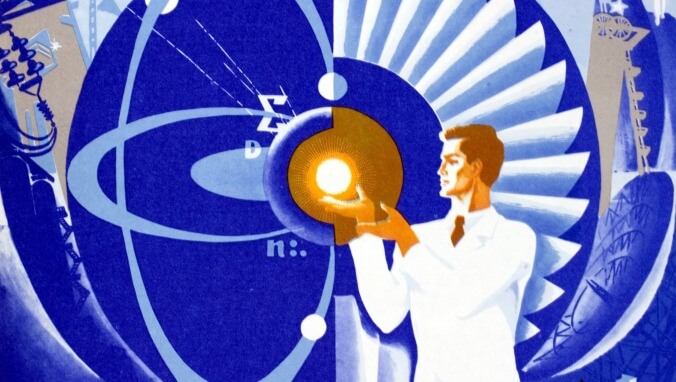Up and atom! This kid built his own nuclear reactor


This week’s entry: David Hahn
What it’s about: North Korea may be proud of its nuclear program, but it was nearly beaten to the punch a decade earlier by a teenage boy. In 1993, 17-year-old David Hahn tried (and nearly succeeded) to build a nuclear reactor in his backyard, earning him the nickname Radioactive Boy Scout.
Biggest controversy: Like many teenagers, Hahn was both very smart and very dumb. He was a brilliant chemistry student, earning a merit badge in Atomic Energy for collecting every element that exists in nature. He wanted to create a breeder reactor, which (via some science we find indistinguishable from magic) creates more fuel than it consumes. However, his plans were thwarted when he was pulled over by the police (for an unrelated “another matter,” which we assume was speeding or something similar), and warned them not to open the trunk because it contained radioactive material. The police quickly turned the matter over to the FBI and Nuclear Regulatory Commission.
Strangest fact: While the authorities frown upon building your own nuclear reactor, the only crime Hahn was charged with was stealing smoke detectors. He amassed radioactive material for his experiment by taking tiny amounts out of household objects—radium from clocks, tritium from gun sights, thorium from camping lanterns, and americium from smoke detectors. While he bought many of these (he spent more than $1,000 on batteries to harvest their lithium), when he attempted to build a second reactor years later, he took the smoke detectors from common spaces in his apartment building, and was charged with larceny.
Thing we were happiest to learn: His experiment worked. While it wasn’t technically a nuclear reactor (see the Wikipedia page for a detailed explanation why), it was a successful neutron source, and created new radioactive material. (Non-fissile, meaning there was no chance of Hahn building a bomb, which likely earned him some some leniency from the FBI.) However, it also produced dangerous amounts of radiation, prompting Hahn to dismantle the device—he was in the process of doing so when he was caught by police.
Thing we were unhappiest to learn: Apart from this moment of brilliance, Hahn led a troubled life. In 1995, the EPA declared his mother’s house a hazardous materials cleanup site. The year after, his mother died of suicide (it’s not clear whether these things are related). He lacked direction after high school, and after sporadically attending community college, he joined the Navy, serving on the USS Enterprise (the real-life nuclear vessel that appears in Star Trek IV), and was honorably discharged with the rank of petty officer, third class. But in 2007, the FBI suspected Hahn was trying to build another reactor.
When they interviewed him, they learned that Hahn been diagnosed with paranoid schizophrenia, and was using cocaine in lieu of his prescribed medication. He also claimed to be afraid of people who “had the ability to shock his genitals with their minds.” His larceny sentence was delayed for six months while he was treated at a local psychiatric hospital.
Hahn died in 2016, from the combined effects of alcohol, allergy medicine diphenhydramine, and fentanyl, the opioid that played a part in the deaths of Prince, Tom Petty, Wilco guitarist Jay Bennett, and rappers Lil Peep and Mac Miller. His death was ruled accidental.
Best link to elsewhere on Wikipedia: Hahn inspired other young scientists. In 2008, 14-year-old Taylor Wilson became the youngest person ever to produce nuclear fusion. He would go on to win first place at the 2011 Intel International Science and Engineering Fair for a project titled “Countering Nuclear Terrorism,” and the following year met with President Obama to discuss nuclear security. He gave a TED Talk in 2013 about a plan to build small nuclear reactors underground (for safety) to create a decentralized power network.
Further Down the Wormhole: Hahn’s charge of larceny is a largely outdated one, as that legal term for theft has been replaced by more-specific categories like burglary, robbery, and fraud. America’s legal framework for theft comes from British common law, which was gradually codified to just plain law. One of Britain’s more controversial laws was the Labouchere Amendment of 1885, which made the broad term, “gross indecency” a crime. In practice, that meant sex between two men, even if there was no evidence. Notable gay men who were punished by the law included Oscar Wilde (prison and hard labor) and Alan Turing (chemical castration). The law was proposed by moralizing MP Henry Labouchere, who was spurred in part by the pro-gay writings of Karl Heinrich Ulrichs, a German lawyer who was a pioneer of the modern gay rights movement. We’ll start Pride Month at the very beginning, next week.